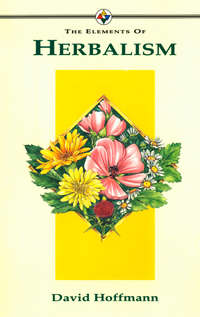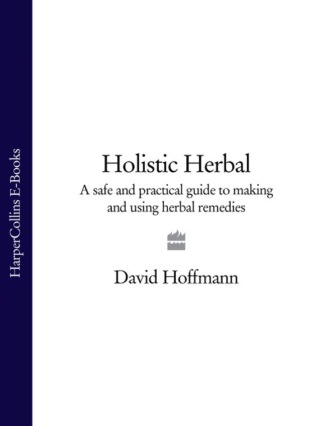
Полная версия
Holistic Herbal: A Safe and Practical Guide to Making and Using Herbal Remedies
Preparation and dosage of mixtures
Throughout the book herbal mixtures are suggested that can support the body in healing itself. Depending on the specific case, those mixtures can be adapted accordingly.
With each mixture, recommendations are made as to the way they should be prepared. Their respective properties are given in parts, meaning proportions of weight of dried herbs, and instructions for their preparation are given accordingly. (Dried herbs can be substituted by other preparations, for instance by tinctures, in which case the same proportions apply. For details on the dosage of tinctures see the specific dosage information in the herbal section.)
Symbols are used to indicate the amount of mixture to use per cup of water, given in teaspoonfuls




Thus


A herbal medicine chest for the home
There are well over two thousand plants which can be used in herbal medicine in the western world. The planet-wide list is far greater. So what can you realistically provide in the home? A daunting prospect faces the fledgeling herbalist, yet by using the actions approach presented in this book, it is possible to stock a small herbal medicine chest which will fulfil most day-to-day needs. The following list of herbs includes representatives of all the main actions, but also specific ones as well. If you are going to stock such a medicine chest, become thoroughly familiar with these 25 plants, and use them at your discretion. They may be stored as dried herbs or as tinctures.
Aniseed Boneset Black Willow Burdock Root Cayenne Celery Seed Chamomile Cleavers Coltsfoot Comfrey Dandelion Echinacea Elder False Unicorn Root Marshmallow Meadowsweet Nettles Peppermint Senna Skullcap Thyme Valerian Wormwood Yarrow Yellow DockIn addition to these specific herbs, it will be helpful to have the following in the form of ointments:
Arnica Chickweed Comfrey Marigold
Distilled Witch Hazel, obtainable from chemist shops, should also be included.
The Holistic Approach
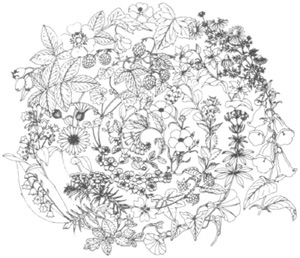
We are on a quest, individually and collectively, to create wholeness within ourselves and within all of our life, to find it within ourselves and to release it—a process of communion and education. What is created will not be separation, conflict and diversity among peoples, but wholeness, oneness, peace, a new earth for humankind that reflects the oneness and wholeness of the earth that has always been.
David Spangler
In the hands of a holistic healer, who works with the life force and with the integrated whole that the body represents, herbs are a powerful tool. In this book I would like to present a context for holistic herbalism. There is the need for a new kind of herbal which goes beyond the more common medicinal approach where herbs are listed alphabetically, prior knowledge is assumed or symptoms are listed with their appropriate remedies. While herbs can be used effectively to treat symptoms, such an approach is just an organic form of drug therapy if we do not take the whole person into account. I offer this book to all who use herbs, all who work in healing, and all who are growing in ecological awareness.
In the holistic approach to healing we can see how ‘all disease is the result of inhibited soul life, and that is true of all forms in all kingdoms. The art of the healer consists in releasing the soul so that its life can flow through the … form’.* Any illness is a manifestation of dis-ease within the whole being. To truly heal, we need to look at the interconnectedness and the dynamic play of all the parts in the whole—the physical, emotional and mental bodies and the enlivening presence of the soul. And then we need to further expand our view and see this wholeness as part of a greater whole: the person’s group, humanity, the entire planet, as all these work together in a dynamic, integrated system.
This ideal may be daunting, but it is an opportunity and a gift to explore this vision and to bring it through into reality. There are many new approaches today to healing, with differing attitudes and terminologies, and together they contribute to a planetary change. As the Tibetan in Alice Bailey’s mystical writings says: “There is no school in existence today which should not be retained. All of them embody some useful truth, principle or idea. I would point out that a synthetic group would still be a separative and separate entity, and no such group is our goal. It is the synthesis of the life and of the knowledge which is desirable. There will be eventually, let us hope, hundreds and thousands of groups all over the world who will express this new attitude to healing, who will be bound together by their common knowledge and aims, but who will express this to the best of their ability in their own particular fields, in their own peculiar way and with their own peculiar terminologies.”*
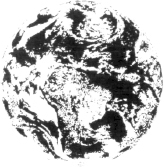
Herbs are part of our total ecology and as such lend themselves to us to integrate and heal our physical bodies. By taking the wider context of the whole being into consideration we see how this inner shift towards holism reflects a global shift, a realignment throughout. As we move into the New Age, a great exploration of consciousness is under way, an exploration we are all involved in. The use of herbs can be a tool of growing consciousness, to recognise holism. In healing we must take the whole being of the patient into our awareness, including the context of their life. We ask patients to look at how to make their environment, habits and activities life-supporting, and by doing this we contribute to a change of consciousness. And we realise more and more that we have the capacity to create our reality and relationships consciously. As our awareness grows we contribute to the illumination of ourselves and of our world. Our planetary companions, the plants, offer themselves in service to humanity. Perhaps through the recognition of this gift, humanity will at last start to serve our planet appropriately, to bring healing and renewal. I write The Holistic Herbal in the light of this vision.
Gaia—the living Earth
The great work of today is the recognition of our wholeness, as individuals, as groups, as humanity and as a planetary whole. Perhaps the most exciting symbol of the birth of this vision of wholeness in the heart and mind of humanity was the first photograph of our world taken from space by the Apollo astronauts. This has been with us for over a decade now, acting as a ‘raising agent’ to leaven the consciousness of humanity.
Seeing our world as a whole helps us to recognise that we are at a turning point in humanity’s ‘groping towards the light’, as Teilhard de Chardin has described it. It is now apparent that our world is not just a passive geophysical object where things happen in random-but-fortuitous ways. In fact Planet Earth can be seen as an active participant in the creation of its own story, a living being now given the name of Gaia, a name from Greek mythology for the goddess of earth. Gaia has been described as “… a complex entity involving the earth’s biosphere, atmosphere, oceans and soil; the totality constituting a feedback or cybernetic system which seeks an optimal chemical and physical environment for life on this planet. This maintenance of relatively constant conditions by active control may be conveniently described by the term ‘homeostasis’.”*
What this description implies is that our world is acting as a whole to create and maintain optimum conditions for life to thrive and evolve. An integral part of this development is the evolution of consciousness in its many forms. The opportunity before us now is consciously to recognise and to embrace our role within the greater being of Gaia. This realisation is not new to us; it has been embraced by the mystics of all religions for as long as humanity has searched for mystical truth. However, we have reached a point in the unfoldment of human culture where these insights are becoming the stuff of science, where the ‘spiritualisation of the mundane’ is truly happening.
The revelation of our unity with Gaia provides a new context within which to view our world and our human actions. Whilst the details of our reality as such are not changing, this broadening of perspective changes everything as we become conscious of inter-relationships between parts within the whole. A parallel can be seen in what happened to physics when the theory of relativity was introduced; it did not change the laws of thermodynamics or the specifics of Newtonian physics, but these laws and world view came to be seen within a much wider and more encompassing perception of the world, the implications of which are still not fully grasped.
The very ability to perceive the earth as living, as Gaia, is an indication of the expansion of consciousness that humanity as a whole is experiencing. Until recently, the only field of human endeavour that was inclusive and holistic enough to grasp the insights that point towards our unity has been that of mysticism and spirituality. Some of these ideas have permeated the teachings of spiritually-enlightened people, or the expression of poets, artists and musicians. It is now clear that even in that most materialistic science, physics, the limits of reductionism have been reached. To explore the nature of our world further it is necessary to expand parameters to embrace the whole of any system. The whole is always more than the sum of its parts. Analysing or reducing something to its constituent parts can only tell us so much, and to find out more, these parts need to be seen in a broader picture that includes function and relationship. Whether it be an atom, a daisy, a worker in a car factory, it can only be perceived and understood when seen in relationship to the greater whole of which it is a part. This is the heart of holism.
The work of the theoretical physicist David Bohm provides a good example of the way science is starting to approach reality as a dynamic web of relationships which cannot be comprehended unless consciousness is taken as an integral part of the universe.* Bohm’s theory explores the order he believes to be inherent at a ‘non-manifest’ level in the cosmic web of relationships that make up the ‘unbroken wholeness’. This order he has called ‘implicate’ or ‘enfolded’, as opposed to the ‘explicate’ or ‘unfolded’ structure of the universe. A useful analogy is that of the hologram, a specially constructed transparent plate which, when illuminated by a laser beam, produces a three dimensional image. The extraordinary property of a hologram is that each part of the holographic plate contains the information for the entire picture. If any part of the holographic plate is illuminated by a laser, the entire image will be produced (although in less detail). The information of the whole is contained, or enfolded, in each of its parts.
This is the nature of our world and universe, an implicit unity and wholeness that is the basis and nature of creation. This perception also recognises the dynamic nature of the universe through the concept of the ‘holomovement’, by looking at the dynamic phenomena out of which all forms of the material universe flow. The focus of study has shifted from the structure of objects to the structure of movement revealing the order enfolded in the holomovement. Implicit in this perception of reality is the essential role played by consciousness. The correlation and interdependence of mind and matter is not a causal relationship. Mind and matter are mutually enfolded projections of a higher reality which are neither matter nor consciousness.
With such developments in physics and the recognition of Gaia in the life sciences, it is clear that profound changes are afoot in the world view embraced by science. This world view is becoming closely attuned to the insights given to humanity by mystics and the spiritual philosophies of the East.* The word ‘holistic’ describes integrated wholes whose properties cannot be reduced to those of smaller units. Holistic attitudes and perceptions are appearing in all fields of life, from agriculture and medicine to politics. The word has its roots in the Greek holos or whole, and was used by Arthur Koestler to coin the word ‘holon’ in an attempt to grasp how systems act as wholes whilst still being parts of yet greater wholes. So we find that each holon has two opposite tendencies; an integrative tendency to function as part of a greater whole, and a self-assertive tendency to preserve its individual autonomy. The subsystems that are described as holons may be individuals, ecosystems or individual cells, showing that for health at any level of organisation these opposite but complementary tendencies must be in dynamic balance. There must be a harmony between integration and self-assertion that makes the whole system flexible and open to change.
It becomes clear that when one considers the whole topic of healing, whether medical or societal, one must view the needs of the individual, or the organ, in the context of the greater whole in which they exist. One must focus on the relationship between the individual and society, between organs and organism. This dynamic relationship between part and whole can be demonstrated as crucial in any field of endeavour and its implications for healing are explored in this book; but broader and more profound conclusions can be reached.
It is becoming apparent that a fundamental change in perspective and context is occurring. The transition into the holistic world view is but a manifestation of a profound reorientation within human consciousness. It is perhaps a response to an inner change in the very fabric of humanity. If evolution is interpreted as the unfolding story of consciousness in our planet, then the point humanity has reached is the threshold of deep and profound expansions in the content and context of consciousness. The vast array of crises that face us can be seen as the result of human limitation and are only solvable by the expansion into deeper, broader, more inclusive realms of meaning. The perception of Gaia and one world is part of the transition into planetary consciousness where our problems are approachable. Whether we then solve them is another question!
At this point of change and crisis there are no convenient maps, no guide books, only the occasional road sign suggesting directions. The limitations of thought and perception that have proved so useful for so long are now only a source of pain and crisis. But crisis is opportunity, and through the pressure and discomfort of our individual and social lives, the cracks are appearing in the shell of human life. A quantum leap in consciousness and possibility is occurring, and, as Marilyn Ferguson puts it: “Our past is not our potential.”*
A wind of change is blowing from deep within the spiritual roots of humanity, moving us forward, waking us up. What this change means is hard to say, although certain outlines may be discernible. While the problems remain the same, the quality of our approach to them will be enhanced by viewing them as wholes within wholes. The key may be in working with a non-judgemental inclusiveness, discriminating between what is or is not appropriate among parts of the whole rather than criticising differences. As humanity has been told for millennia, love is the key. And we each have a role to play in this exploration of the new, in the revealing of our new parameters, in humanity’s groping towards the light.
One of the ways in which this profound spiritual transformation is manifesting is in the area of cultural values and attitudes, leading to a ‘paradigm shift’, a shift in the pattern of thoughts, perceptions and values that form our particular vision of reality. It encompasses the complete vision of what society considers to be its reality. The way science is being transformed by this shift has been briefly touched upon, but the cultural impact is profound and often painful. The whole of our world—whether individuals, civilisations or the biosphere—is undergoing a crisis of birth and transition. The pain of this growth should not be avoided; the cultural transformation cannot be prevented. It would seem that through the trauma of the birth process lies the escape from crisis and collapse.
Within the chaos that seems to be surrounding this time of transition, our response to it can be completely free and open. In some fields there is an active growth towards the new vision which shows itself in certain areas of science and the arts, in the development of communities and the broad expansion of human growth and spirituality. However, in other areas the old vision and old paradigm are grimly being held on to, causing much pain and suffering as the old patterns no longer provide help or guidance within the new situation. Politics and economics, whilst trying valiantly to stem the tide, are fields of thought stuck in the old fragmented perceptions. Unless there is a movement towards more inclusive policies and attitudes, an embracing of the fact of our one world, there seems little hope of cure for our megacrisis. However, from within the new paradigm the outlook is totally different. Whilst not being easy, there are many directions in which our culture can move. The spirit of wholeness that holism offers to humanity can act as a beacon lighting our way as we stumble home.
The vision of Gaia offers a way in which the consciousness of humanity can resonate with the planetary whole. The vision and purpose of the spiritual drive of humanity can consciously synthesise scientific striving and allow a dynamic interaction between humanity and other realms of nature, within the embrace of the being which is the planet, which is Gaia.
Through the right flow of energies within a system, a body, an ecosystem, comes ecological harmony, comes healing. In this book I wish to share a vision of herbal medicine as a manifestation of Gaia at work, providing that which we need to ensure health and vitality in our physical bodies which in turn allows us greater involvement in the whole. Holistic healing offers an abundance of relevant, valid techniques, something which simply reflects the diversity of human consciousness. There is no need to separate herbal medicine from other holistic forms or even allopathic medicine; they are all valid as agents of healing. This book focuses on herbs as a healing tool, as ecological healers that are gifts from Gaia to humanity.
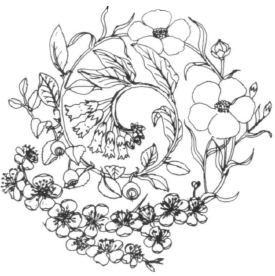
Herbs and Ecology
‘He causeth the grass to grow for the cattle, and herbs for the service of man’
Psalm 104:14
Herbs, which comprise much of the realm of plants, are an interface within the body of Gaia. They are an interface between two realms of nature. Where humanity and plants meet, a synergistic energy can be created and exchanged. At such a point inner and outer ecology may resonate and become attuned. We have then an ecologically-integrated process that heals and harmonises the inner environment (the human body) whilst being produced by an outer harmonised environment (nature).
Flowering plants first appeared in geological history during the Cretaceous period, about 135 million years ago. It took them only a very short period of time to diversify into the main flowering plant families we know today. This baffled botanists for a long time until they recognised that the plants evolved within the context of an ecological whole and not as isolated individuals. They evolved within the ecosystem they lived in. The rapid diversification took place through the interaction of plants and insects. The interface between plant and animal realms provided the evolutionary drive.
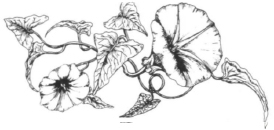
With the concept of Gaia in mind, we can see that evolution is an exercise in cooperation as well as one of competition, both processes forming a web of interactions and producing the complex tapestry of today’s ecology, an interwoven dynamic system. The ecosystem can only be understood as a whole—as one integrated and self-maintaining unit. All that is needed for the maintenance of any part of the whole is supplied by it; in fact has to be supplied by the system, since there is nothing outside it. If the system did not take care of itself, it would not be viable and could not survive.


